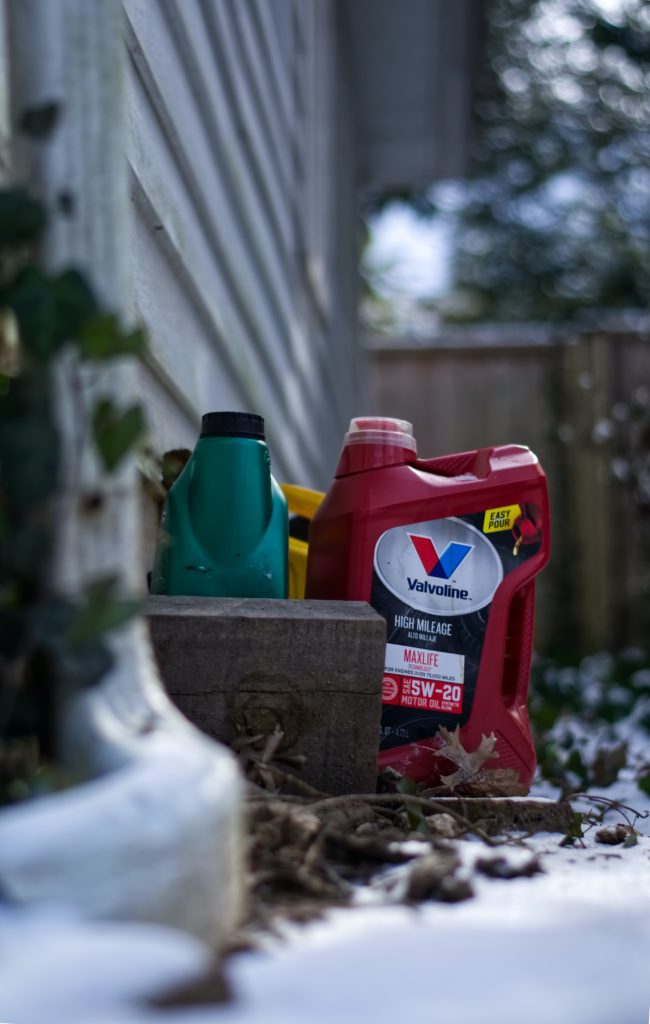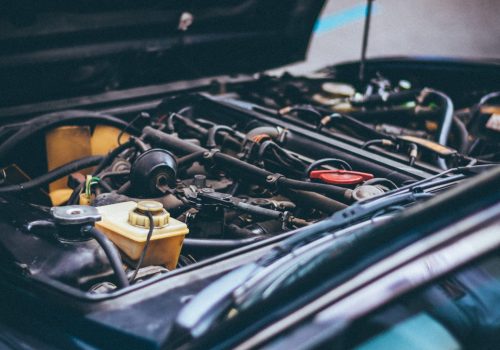
How to Check the 6 Essential Vehicle Fluids of Your Car or Truck
Save Time & Money by Checking Your Essential Vehicle Fluids at Home!
Oil
Oil is arguably one of if not the most important fluids for your vehicle. (only competing with fuel that is) And thankfully it isn’t too hard to check! Your engine oil can be checked underneath the hood, each car is different, so be sure to double check your owner’s manual if you aren’t sure exactly where it is. Most people say that it’s best to let your car have about a 10-minute break after driving it to make sure that the oil has cooled and settled down so that you can get an accurate reading. Once you have located the oil dipstick, pull it out and wipe it clean on a clean towel or rag. Once it has been wiped clean, reinsert it all the way back in tight, and pull it back out. Now will be the time that you can read it, oil dipsticks have a minimum and a maximum line. You generally will always want your oil to be right about at or just under the maximum line. If your oil is significantly lower than that, you will need to add more oil in, and even start looking into possible issues such as an oil leak. The other thing that is good when checking your oil is making sure that the oil quality is still good. Engine oil should always be a yellowish amber color. If it becomes brown or black, it’s time for an oil change. Any other colors you notice could also indicate a leak or something else!
Brake Fluid
Brake fluid is an obviously important part of a vehicle’s performance. We use our brakes as second nature when we drive, and it’s good we do otherwise our roads would be chaos. Brakes today are actually hydraulic, so they use fluid in order to create the pressure needed for the brake pad to clamp onto the rotors which then in turn slow down your vehicle. If that is not happening, or not happening quickly, the first thing to check would be your brake fluid. Again, we would recommend looking at your owner’s manual if you are uncertain where the brake fluid is located under the hood. The most common issues within the brake fluid can be water contamination, leaks, or not enough fluid. Once you have the brake fluid located, check the minimum and maximum levels, add more accordingly. Another thing to check is the quality, make sure that your brake fluid is translucent. If it becomes clouded, it is definitely time to replace it.

Power Steering Fluid
Many people have never experienced the difference between regular and power steering, but if you drive a car built in the last 60+ years, you more than likely are driving with power steering. Power steering allows for the driver to make wheel movements easily while driving. This also is a hydraulic feature that needs fluid in order to keep it working properly. Look for either a dipstick or reservoir under your hood and check the owner’s manual if you are unable to find it. Take a look at the minimum and maximum markings to see where you are, if more fluid is needed, be sure to educate yourself on the correct type of fluid needed. If you notice any issues with your steering, be sure to take your vehicle into a professional to diagnose any possible issues.
Engine Coolant
Coolant is also a super important fluid for your running vehicle. Engine coolant, otherwise known as radiator fluid, keeps your engine from overheating while running. It’s crucial to keep this fluid checked often. To check the coolant, find the radiator cap underneath the hood of your car. DO NOT check this fluid when your engine is hot from driving, the pressurized coolant can spray when the cap is opened and cause burns. Wait until your engine cools down a little bit after driving, and then with extreme caution you can open up the radiator cap with a rag or towel. Look in to see if you can see any coolant, if you cannot see anything near the top of the reservoir, it’s time to add some more.

Transmission Fluid
Transmission fluid is checked almost the same exact way as
your engine oil. Check your car manual to see if you need to leave your car
running or in neutral to check it. Also, not all cars have a dipstick under the
hood to check the transmission fluid easily. Some vehicles must be taken into a
mechanic in order to have the transmission fluid checked. Be sure to educate
yourself in order to learn more about how yours can be checked, whether at
home, or at a shop.
Washer Fluid
Lastly, washer fluid, is an affordable, easy vehicle fluid to keep up on. Keep some washer fluid on hand and check every few months to see whether you need to top yours off. Washer fluid can be a huge help to you while driving. Keeping your windshield and vision line clean is important to make sure that you are driving safely. You can also get fluid that helps repel rain and get those pesky bugs off your windshield.
We hope these 6 tips help you check some of the most important fluids in your vehicle to keep your car or truck running for longer. Although not everything can be done or checked at home, it’s good to get to know your vehicle better and maybe save some money while you’re at it!
